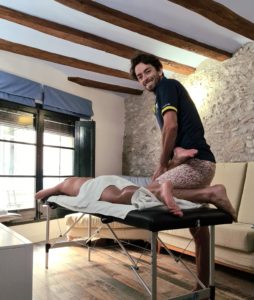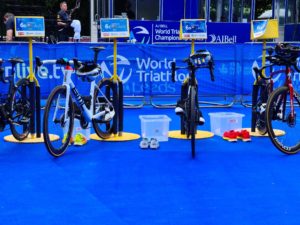 Triathlon – Best tips to train and perform like the pro’s
Triathlon – Best tips to train and perform like the pro’s
James Lewin is a former Professional Triathlete, and is now trusted by some of the best in the world for their physiotherapy and bikefit needs. in October 2024, James heads to Kona for the World Ironman Triathlon Championships where he will compete against the best on the planet!
Since working as Team Physiotherapist for Triathlon Australia, I’ve had the distinct pleasure of getting to work closely and learn from some of the world’s best endurance coaches and athletes. When put in an environment like this, there’s only one logical thing to do: learn! I’ve watched with intrigue, I’ve listened intently, and I’ve asked far too many questions. In this blog, I’ve tried to capture some of those learnings and fashion them into SIX main take home tips to succeed in endurance sport. A few caveats:
- These 6 tips can’t possibly cover everything you need to know about endurance success
- With my physio hat on, I’m always going to be absorbing information through a lens of health and injury prevention – so these tips probably reflect that
- I have been a triathlon coach at a community and development level for close to 10 years and an endurance sport tragic for close to 20 years…so my own experience will probably creep into these tips as well
So here we go!
1. Learn to love repetition
The most striking thing about watching the best in the world train, is not some one-off epic session they do, or some crazy YouTube vlog worthy 10-hour-training day…it’s the way that they can just wake up every morning and do the same thing, day-after-day, week-after-week, month-after-month, year-after-year.
‘the ability to endure monotony is an underrated super-power’ – Iron Cowboy James Lawrence
Their ability to tolerate repetition is really what sets them apart from us mere mortals. The team repeat a lot of the same training cycles & training sessions over and over again. The coach once said to me (of an athlete who has been training with him for ~6yrs) ‘she’s probably done that particular run session 50 times by now – but it’s always in a slightly different context’. I believe training programs designed to create variety & novelty are just an insult to our attention spans. If you can learn to love running the same old route over-and-over again then you’re one step closer to success!
2. Do more easy stuff
The athletes I work with are training somewhere in the realm of 25-35 hours per week. This is 2-4 training sessions per day, or ~21 sessions per week. Of these sessions, AT MOST 6 would be quality. 2 hard swims, 2 hard rides, 2 hard runs. The rest…easy. To put a different way, if all of the time working hard was added up, it would make 3-4hrs/wk. That’s ~15% of total training time, meaning the other 85% is easy.
If I were to reflect on some of my past training habits (and some of those of my patients) this intensity distribution would be significantly different…almost the opposite! A common reason might be that you only have ‘x’ amount of hours to train per week, so you skip the easy stuff in favour of the hard stuff (on the assumption that the hard sessions are the important ones). Unfortunately, the science is convincing here. Accumulation of aerobic load over time is a very reliable predictor of performance. So if in doubt, do a bit more easy stuff.
 3. Go easier on your easy stuff
3. Go easier on your easy stuff
This one is a big one – maybe the biggest. This is the one I find hardest to convince my athletes and patients of.
Since living and working with this crew, I’ve been lucky enough to get invited along to some training. One of the sessions I was most nervous for was a group ride. The main reason I was nervous was because every ride in Font Romeu is hilly…very hilly. Whilst I’m no slouch, my power-to-weight ratio is put to shame by the rest of these men & women. I was nervous that I was going to get dropped as soon as the slopes went over 5% and I’d have to find my own way home. To my pleasant surprise, I kept up the whole way…and not only that…it was bloody easy. When I spoke to our Portuguese teammate Vasco Vilaca and expressed my surprise at how easy they were going, his response was “why would I go hard on an easy ride? We’ve got a hard ride tomorrow, and I want to smash that”
There are two big reasons why making our easy training easier is of benefit. Firstly, if we train easy today, then we have more energy reserves to train really hard on tomorrows hard session. Doing easy stuff too hard blunts our top end performance when we ACTUALLY want to go hard. Secondly, doing easy stuff easy means that our body can handle more of it. Our bodies can only tolerate so much stress. If we reduce our effort on easy sessions by 20%, and it means that our bodies can handle 20% MORE training hours – then this will result in long term performance gains.
4. It’s not what you’re able to get done today…it’s what you’re able to get done tomorrow
I’ve heard a lot of the athletes repeat a mantra along these lines. They all carry the same philosophy. Today’s training session is only a success if you’re still able to get up and train again tomorrow. It might be a nice feeling to out and a smash a huge session today, but if it means you need to rest for the next 2-3 days…then most elite athletes would consider that session a failure, not a success
 5. Endurance performance takes years.
5. Endurance performance takes years.
Be patient. An old coach once told me that your best year of training will produce results 2-3 years in the future. Unfortunately, we’ve been conditioned to expect instant results…with ‘5-weeks-to-your-best-5km’ & ‘fast track-your-fitness’ type marketing getting thrown at us constantly. A few of the athletes on the team have been around the sport for 20+ years, and they’re still getting better! Most of the athletes are setting goals for 2-4years from now, as opposed to 2-4 months from now!
Once you realise that your best endurance performance takes 8-12 years of good training (rather than 8-12 weeks) then you’re already a step closer to success. This might sound daunting, but I like to think of it as exciting. Imagine picking up a new sporting hobby at 30 years old…maybe you’ve finally hung up your footy boots in favour of two wheels. What an exciting prospect it is that you’ve got the potential to keep getting stronger & stronger until you’re 42 (and maybe longer!)
Bonus tip #6
Stop skim reading articles like this looking for shortcuts! There are no shortcuts, there are no secrets, there are no bio-hacks…if it sounds too good to be true then it probably is. If you want to improve your sport performance…just do the simple stuff well…and do it for a long time.
You can book to see James for physiotherapy or bikefit by clicking this link!

Collagen and Protein
Is collagen your rehab MVP? Collagen is everywhere on your social feeds with powders, pills, gummies and more — but can it speed up your rehab? Donna Kimpton is an accredited practising dietitian (APD) who works with the team at Star Physio to help patients and...

Shockwave Therapy
Shockwave Therapy at Star Physio WA At Star Physio WA, we are excited to offer Shockwave Therapy, a modern treatment that delivers outstanding results for many stubborn injuries. This non-invasive treatment uses acoustic waves to stimulate healing in damaged tissues....

Top Tips for Post Injury Running Shoes
Running Shoes and Injury. Normal Running Loads. It can be frustrating for a runner to be sidelined with an injury. Running places considerable stress on the muscles, joints, tendons and ligaments. Even the most efficient runners see loads of 2-3 times their body...

Sports Dietitian and Nutrition
Are You Getting Enough? Essential Sports Nutrition and Diet Tips. Athletes and active teens with high training loads have increased nutritional needs. Working with a Clinical Nutritionist or sports dietitian can help ensure you're fuelling your body for performance,...

